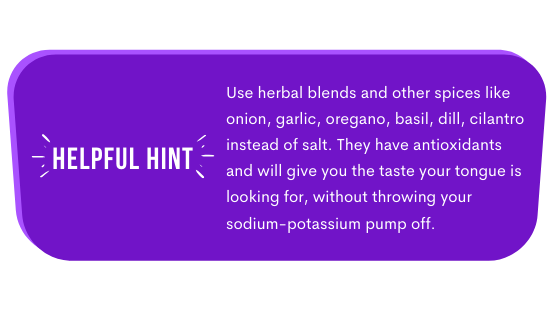Nutritionist Kristin Gustashaw recently visited Viking to share nutrition tips for gymnasts and dancers to help us be the best we can be!
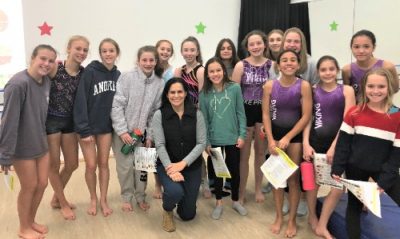 Kristin shared nutrition tips for gymnasts and dancers, explaining that what we put in our bodies now fuels our body for today, tomorrow, and also the next 40, 50, 60 years. As athletes, we want to make sure the foods and drinks we consume are helping us achieve our goals and help us through the process.
Kristin shared nutrition tips for gymnasts and dancers, explaining that what we put in our bodies now fuels our body for today, tomorrow, and also the next 40, 50, 60 years. As athletes, we want to make sure the foods and drinks we consume are helping us achieve our goals and help us through the process.
Proper nutrition means that we are getting the right amount of fuel for what we are doing. Athletes not only need nutrients to boost our daily performance, but also to help us decrease the risk of injury, recover fully after workouts, and to stay healthy. To ensure we do this we should find nutrient-dense foods that taste good, that we enjoy, and that can be prepared easily.
Nutrition Tip 1: Nutrients For the Win
Nutrient-dense foods are ones that get us as much as we can get out of what we are eating. For example, spinach versus head lettuce. Spinach packs in high amounts of carotenoids, vitamin C, vitamin K, folic acid, iron, and calcium. Iceberg lettuce has nutrients in it, but you will get a much smaller amount with each bite. When picking your food, see if there is an easy alternative that will give you more nutrients. Instead of regular, white flour pasta, try whole grain pasta or quinoa.
We should limit foods high in sodium, added sugars, and refined grains. Most of our foods should not have a label, because they should be a whole food. If there is a label, look to see that it has a good protein source (around 10 grams), complex carbohydrates ‘whole grains’, and a rich source of fiber.
Nutrition Tip 2: The Big 3
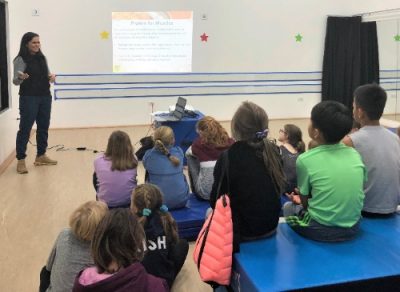 There are 3 Main Nutrients your body needs; Carbohydrates, Protein, and Fats. Carbohydrates are the primary fuel for our brains. These are what our muscles use for energy. More than half of what we eat should come from good carbohydrates like whole-grain breads and pasta.
There are 3 Main Nutrients your body needs; Carbohydrates, Protein, and Fats. Carbohydrates are the primary fuel for our brains. These are what our muscles use for energy. More than half of what we eat should come from good carbohydrates like whole-grain breads and pasta.
We need protein to build new muscle and tissues, to repair and strengthen muscles after strenuous practice, and for hormone and enzyme production. Lean meat, poultry, fish, eggs, beans, lentils, or tofu should be included in every meal to meet protein requirements. Fatty fish is a protein but is also loaded with Omega-3 fats. If you are a fish eater, try to have fish twice a week, because Omega-3 fats to help reduce inflammation, swelling, and speed recovery. Vegetarians may need to work harder to find good sources of protein, but it is definitely possible to be a strong athlete and meet protein needs.
Fats are essential for building body cells and nerves, insulating and protecting organs, and aiding the absorption of vitamins. Choose healthy fats like fatty fish, milk, olive oil, nuts, and seeds. Limit fats in desserts, fried and processed foods. Remember no foods are forbidden, but we want to choose foods that are going to help us as athletes and in life.
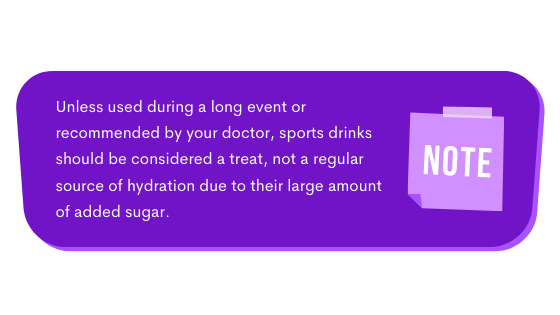 Nutrition Tip 3: H2O is the Way to Go
Nutrition Tip 3: H2O is the Way to Go
Water is Kristin’s favorite nutrient! Our bodies cannot utilize any of the nutrition they take in without water. Staying hydrated also keeps joints limber, increases stamina, and improves coordination, reaction time, and concentration. Drinking pure water is best. When we become dehydrated our muscle strength, speed, energy, and cognitive processing decreases and the risk of injury increases. 95% of muscle cramps are due to dehydration. Eating fruits and veggies is also a great way to stay hydrated because they contain a lot of water.
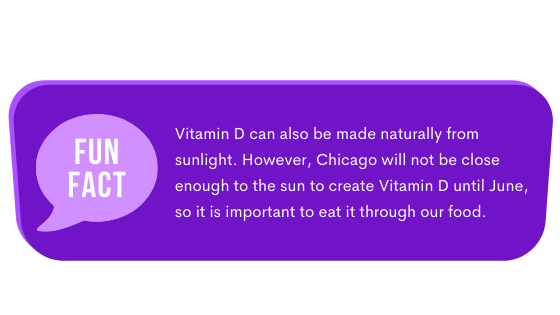
Nutrition Tip 4: Make Your Bones Strong as Stones
Though good bone health is important for everyone, the physical, impact, and endurance activities gymnasts and dancers do, rely on strong bone to perform. Training itself helps build strong bones but the other half is what we put in our body — our fuel. Calcium and vitamin D are key to forming strong bones and teeth, enhancing performance, resisting fractures, and preventing weak bones as we get older. Calcium is found in milk, leafy greens, and cheese and yogurt. Vitamin D is found in fatty fish, egg yolks, and fortified foods like soy milk.
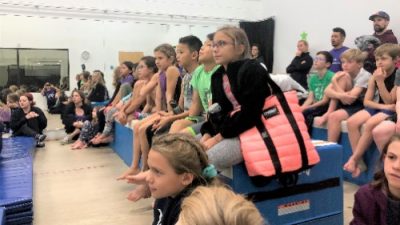 Our bone strength is being affected by the nutrition we are taking in now and can be strengthened into our 30s. We are truly building the foundation of our bones for the rest of our lives right now. Think about the fable, The Three Little Pigs. Which house took the longest to build? The brick one.
Our bone strength is being affected by the nutrition we are taking in now and can be strengthened into our 30s. We are truly building the foundation of our bones for the rest of our lives right now. Think about the fable, The Three Little Pigs. Which house took the longest to build? The brick one.
But which house withstood time and the elements? Yup, you know it!
Take the time to get the best nutrients now. It only takes three weeks to break down bone, but it takes three months to build it back up. Proper nutrition will not only build bone density, but will keep your muscles strong, too. And stress fractures are caused by muscles that are too tired to absorb added shock, sending that shock to the bone.
Lastly, it is especially important for athletes to keep up their iron intake. Iron is a mineral essential for transporting oxygen through our bodies. Lean meats, eggs, leafy vegetables, and fortified whole grains are good sources of iron.
Did you know that it takes 20 minutes for your stomach to tell your brain you are full? So eat until you are satisfied, not full. And make sure to drink water with your meal.
So how can you take all this important information and make it most useful for your gymnastics or dance career?
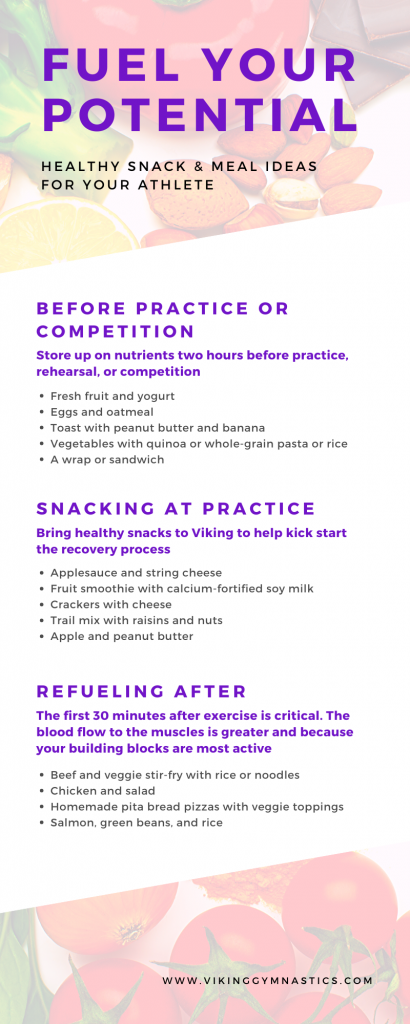
Remember to follow these nutrition tips for gymnasts and dancers — we need food for energy and we need fuel all day long to be at our physical and mental best!
We will leave you with this catchy nutrition song about food groups – enjoy!

